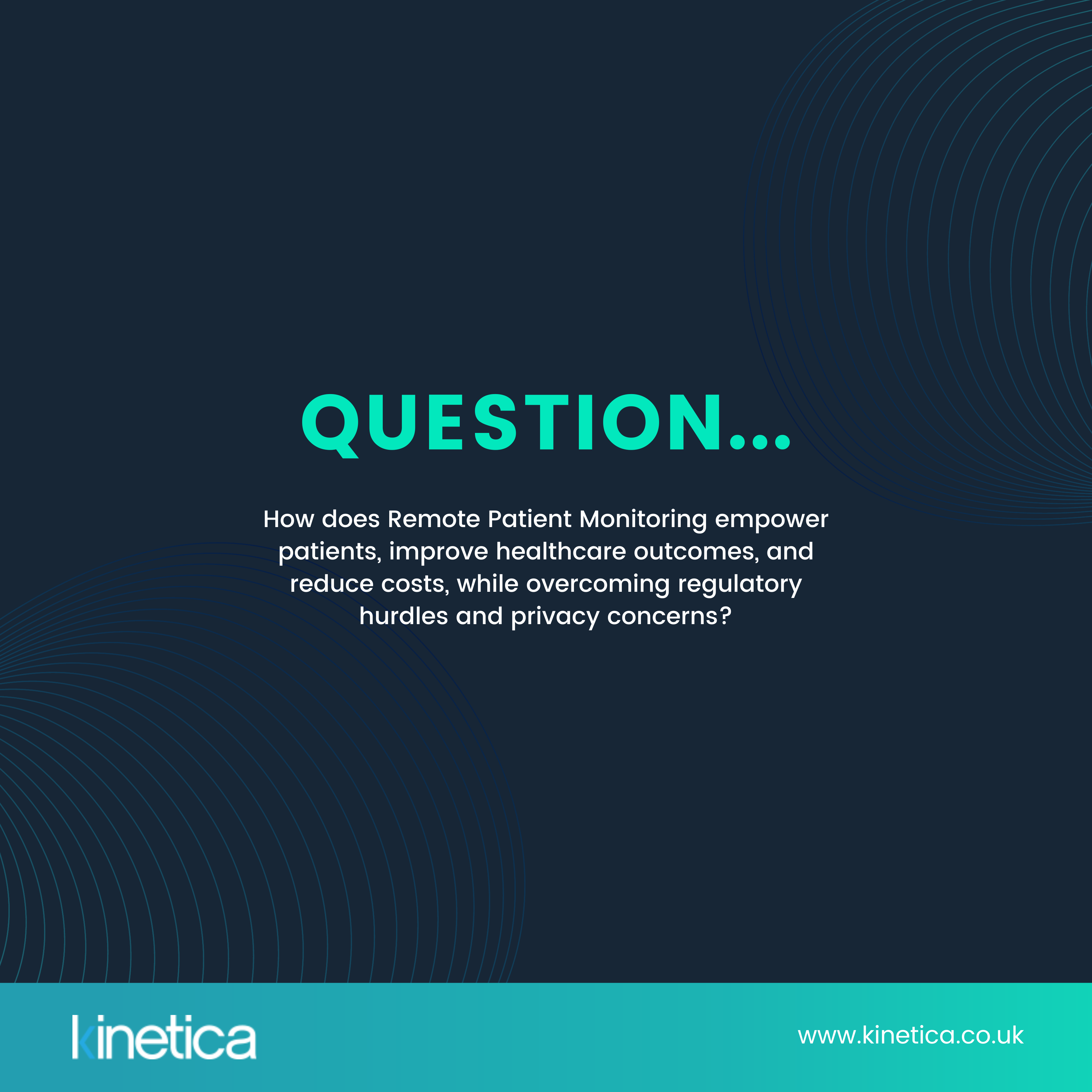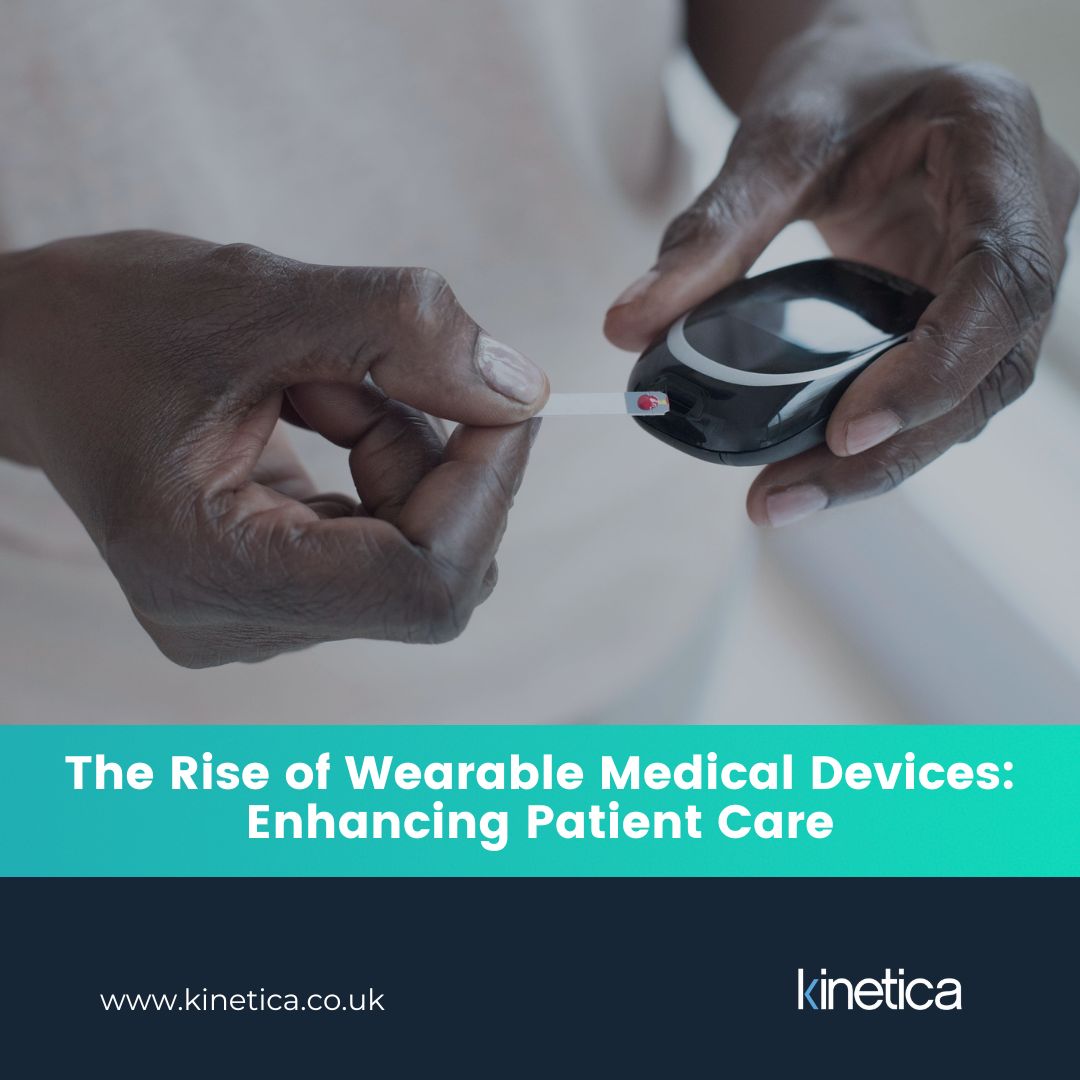INSIGHTS
The latest insights & news from Kinetica
Exploring How Remote Patient Monitoring Enhances Outcomes through Technology
08 Apr, 20245 MinutesAs the demands on healthcare systems increase and the prevalence of chronic diseases rises, ...

As the demands on healthcare systems increase and the prevalence of chronic diseases rises, the need for innovative solutions becomes more pressing. This is where Remote Patient Monitoring (RPM), a transformative approach that holds the promise of improving outcomes and reducing healthcare costs, has emerged.
In the realm of healthcare, technology continues to play an increasingly vital role, not just in diagnosing and treating ailments, but also in transforming the way we monitor and manage patient health. One such groundbreaking innovation is Remote Patient Monitoring (RPM), a game-changer that holds the potential to significantly improve outcomes for patients while alleviating burdens on healthcare systems. Let's delve into how RPM is reshaping healthcare delivery and empowering patients to take charge of their well-being like never before.
Remote Patient Monitoring, often abbreviated as RPM, involves the use of technology to monitor patients' health remotely. According to a survey conducted by Insider Intelligence, more than 23 million patients were already using remote patient monitoring tools and services in 2020. Furthermore, this number is expected to rise, with more than 30 million people expected to use these same tools and services by 2024. This trend indicates a significant demand for RPM, signalling considerable growth potential.
From tracking vital signs like heart rate, blood pressure, and glucose levels to monitoring medication adherence and symptom progression, RPM offers a comprehensive approach to patient care outside of traditional clinical settings. The University of Pittsburgh medical system reported that patient satisfaction scores rose to over 90% after they provided patients with equipment and tablets used for remote patient monitoring, indicating positive reception among patients.
One of the most significant advantages of RPM is its ability to provide continuous monitoring, offering healthcare providers a more comprehensive and real-time view of patients' health statuses. Unlike intermittent clinic visits, which may miss important fluctuations in health, RPM enables proactive intervention by alerting clinicians to any concerning changes promptly. This early detection can prevent complications, reduce hospitalisations, and ultimately improve patient outcomes.
Beyond its clinical benefits, RPM also empowers patients to actively participate in their own care. According to a survey from MSI International, more than 80% of people in the United States are in favour of remote patient monitoring, indicating widespread patient acceptance and recognition of the benefits it offers. By providing access to personalised health data and educational resources, RPM encourages patients to make informed decisions about their lifestyle and treatment choices. Moreover, the convenience of remote monitoring fosters greater patient engagement and adherence to care plans, leading to improved medication compliance and healthier behaviours.
In addition to its clinical and patient-centric advantages, RPM holds significant promise in reducing healthcare costs and enhancing access to care, particularly for patients with chronic conditions or those living in remote areas. According to information published by the Centre for Connected Health Policy, more than half of all states have already adopted Medicaid coverage for remote patient monitoring, highlighting growing support from insurance providers and policymakers.
By remotely monitoring patients' health and intervening early to prevent complications, RPM can lower the frequency of costly emergency room visits and hospital readmissions. Furthermore, telemedicine-enabled RPM allows patients to consult with healthcare providers from the comfort of their homes, overcoming geographical barriers and improving access to specialised care.
Despite its potential benefits, the widespread adoption of RPM faces several challenges, including regulatory hurdles, interoperability issues, and concerns about data privacy and security. Addressing these challenges will require collaboration among policymakers, healthcare providers, technology developers, and patients to establish clear standards, ensure data protection, and promote reimbursement models that incentivise the use of RPM.
Remote Patient Monitoring represents a paradigm shift in healthcare delivery, harnessing the power of technology to improve outcomes, empower patients, and enhance healthcare efficiency. As technology continues to evolve, embracing innovations like RPM will be crucial in shaping the future of healthcare and advancing the well-being of patients worldwide.
Comment your thoughts on this topic below!
#Kinetica #RemotePatientMonitoring #DigitalHealthcare #HealthTech



